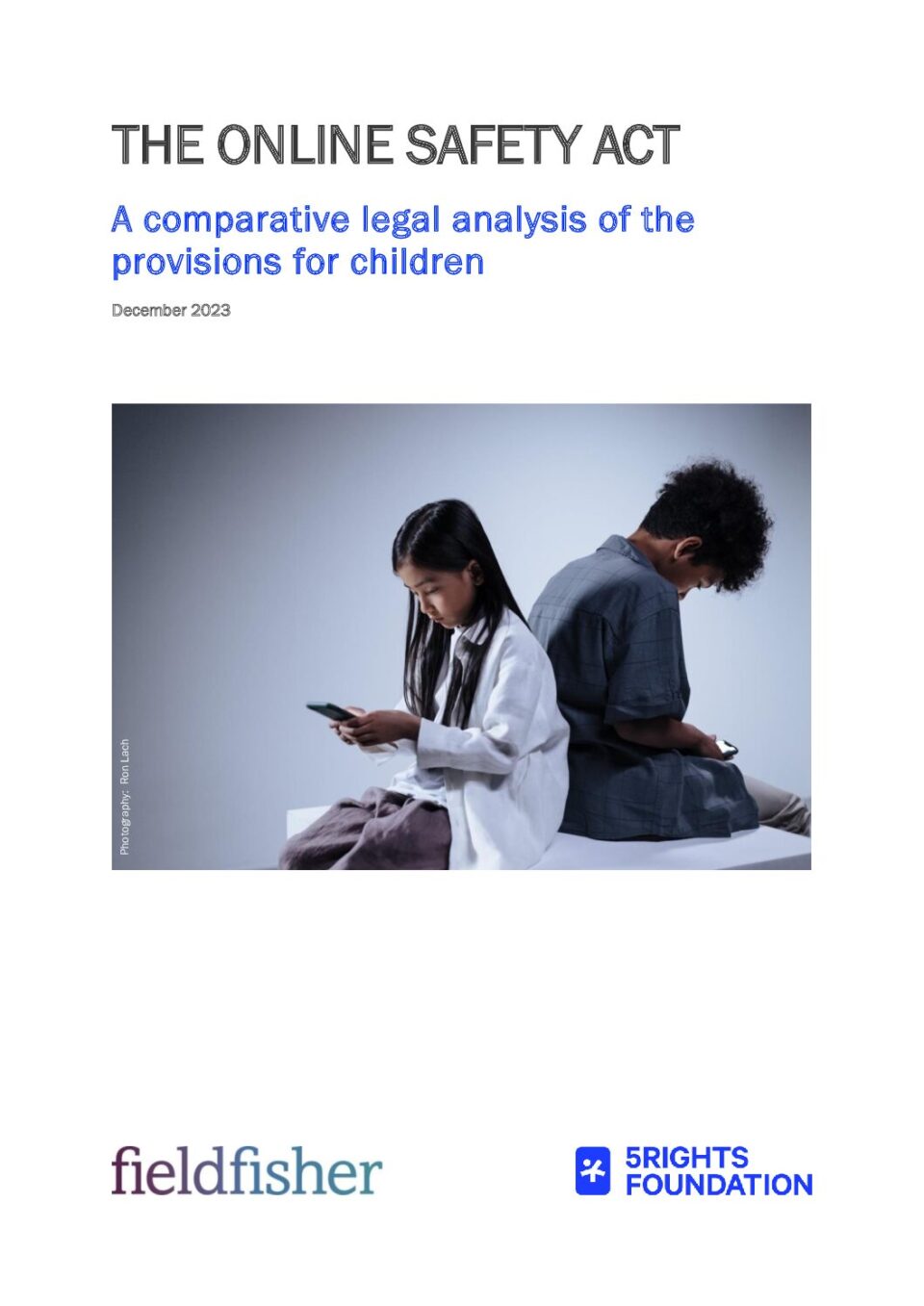Analysis of the Online Safety Act’s provisions for children
“Government has often claimed that the OSA will guarantee that the UK is the safest place to be online. I am happy to go on record to say, that in the case of children I believe that is true,” said 5Rights’ Chair and founder, Baroness Beeban Kidron, opening a 5Rights webinar bringing together legal, regulatory and children’s rights experts to unpick what the Online Safety Act (OSA) will mean for children in the UK.
Following five years of deliberation, the OSA became law on 26 October and the baton was passed to the regulator Ofcom to put the detail into the new regulatory framework. While this implementation is ongoing, the event sought to learn from the experts what this outcomes-based piece of legislation should and will mean, and crucially, how it contributes to 5Rights’ mission of delivering the digital world children deserve – one which is rights respecting, delivers on privacy and is safe by design.
The 4 December event saw the launch of a legal analysis undertaken and presented by Lorna Cropper, Legal Director at Fieldfisher and children’s data protection and online safety expert, of how the OSA builds on the UK’s regulatory ecosystem for children online and what tech companies must now do.
Starting from a baseline of strong data protection for children thanks to the UK’s Age Appropriate Design Code (AADC), the analysis highlighted how the OSA introduces new measures and offences into UK law, reflecting and building on the AADC approach to ensure services “likely to be accessed by children” are safe by design. Risk assessment and mitigation, with specific attention to features and functionalities that put children at risk and can lead to harm, are a clear focus of both regimes.
As 5Rights Executive Director Leanda Barrington-Leach wrote in her introduction to the report: “When the AADC came into effect in September 2021, it brought about hundreds of design changes that have delivered real benefits to children in the UK and around the globe. The OSA, with its clear categorisation of harms and mandate to the regulator to develop, implement and enforce detailed codes of practice to safeguard children, has the potential to supercharge this progress.”
The launch of the analysis comes as part of 5Rights’ year-long campaign with Dove, Global Action Plan, Girl Guiding and Parenting Mental Health to tackle the growing mental health crisis amongst women and girls and see tech companies adopt a safety by design standards to keep children safe. Following the launch of the campaign film, the Cost of Beauty, on UK TV screens in early spring, a petition was launched which quickly reached over 75,000 signatories – demonstrating the strong public support for inclusion of duties on safety by design measures in the OSA. The event heard from the CEO of Global Action Plan, Sonja Graham who talked about the addictive design of social media, and how the responsibility for fixing it must lie with tech companies – and not parents and children.
Haydn Guildford-Ross, a young campaigner from Gifted Young Generation gave a speech at the event on behalf of the youth group on his hopes for the future and his ideas for what tech companies could do change algorithms to prevent them from contributing to the mental health crisis.
Speaking on an expert panel moderated by Carnegie UK Trustee, William Perrin, Sir Peter Wanless, CEO of the NSPCC and 5Rights Trustee emphasised how “there is a clear mis-match between changes companies are making and what children need to make a real difference to their online experience. The Online Safety Act needs to change this, to ensure the online world caters to children, before it’s too late.”
Almudena Lara, Online Safety Policy director at Ofcom, recognised that “tech moves very fast and the OSA gets it right in focusing on systems and processes, risks and outcomes, irrespective of the tech.” Ofcom’s code on child online safety will cover among others user access, system design, content moderation, governance, user access, Almudena added, stressing that enforcement will follow: “We hope to see results before, especially from the largest, riskiest companies.”

